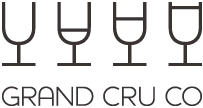A brief look at the past week in wine...
Bordeaux wine names get legal cover in China
Chinese authorities have agreed to protect the legal status of nearly 50 Bordeaux wine appellations in what could prove a landmark deal in the country. China appears increasingly willing to recognise the concept of geographical indications (GI), which restrict rights to certain names for specific products.
Chinese authorities recognised Bordeaux as a protected GI in June 2015 recognition and Beijing this week officially recognised all still wine appellations within the Bordeaux region. Bordeaux is the first wine region to receive recognition of such a large number of names – almost 50 appellations in total, including less well-known ones such as Bordeaux Haut Benauge and Graves de Vayres. Currently only five other international wine and spirits names have been accorded the same protection – Cognac, Champagne, Napa Valley, Scotch Whisky and Tequila.
Bordeaux’s wine bureau (CIVB) said the move would make it easier to combat forgeries and brand squatting in China.
It has been working with the Chinese General Administration of Quality Supervision, Inspection and Quarantine (AQSIQ) since 2011 to achieve this recognition. Certain appellations, such as St-Julien and St-Estèphe, are also separately registered as trademarks in China.
CIVB president Bernard Farges said, ‘I salute the hugely impressive work of the AQSIQ, that has explored every detail of this complex subject. Both France and China are in full agreement on the importance of this geographic recognition.’
China remains the highest value and volume export destination for Bordeaux wines, with over 63 million bottles heading there in 2015, with a value of €277 million – over one quarter of all exports from the region.
‘Catastrophic’ hail in Chablis, Beaujolais and Cognac
Fierce hailstorms have damaged vineyards in parts of Chablis in Burgundy, plus Beaujolais and Cognac, leading the country's farming federation to declare a 'state of catastrophe' in the worst-hit areas. Hail in Chablis is expected to have severely damaged vineyards in the southern part of the famous Chardonnay region in Burgundy.
There have also been reports of serious hail damage in nearby Beaujolais and also Cognac, further west. Full damage reports were not yet known by Tuesday 31 May, but France’s national farming federation, FNSEA, has declared a ‘state of catastrophe’. One producer told France’s Le Figaro newspaper, ‘it’s Apocalypse Now’.
FNSEA’s declaration has not yet been confirmed by France’s agriculture ministry, but French agriculture minister Stéphane Le Foll said he had ‘mobilised the state’s full resources’ to assess damage and find a way to help those affected. The latest outburst from the skies marks a tough beginning to the 2016 growing season in some parts of Burgundy, and particularly Chablis.
It is the second hailstorm that some vineyards have experienced already this year and frost had already damaged some growers’ first buds in April.
This time, violent hail in southern Chablis was expected to have caused extensive damage to vineyards in the communes of Courgis, Préhy and Chichée. Some Premier Cru and Grand Cru vineyards were affected, but it was too early to know the damage due to subsequent heavy rain. That rain has forced the winemakers to delay spraying sulphur or comfrey on the leaves in the vineyards, which has increased risk of mildew.
Heavy rain during the vine flowering period can also affect yields, but it was again too early to know the extent of the problem.
English sparkling wine ‘undervalued’, says Master of Wine
Many English sparkling wines are undervalued compared to their Champagne equivalents, Stephen Skelton MW has told an international audience of 600 wine producers, buyers, marketers and media.
The renowned English wine industry consultant and Regional Chair for the UK at the Decanter World Wine Awards made the comment during a tasting of English sparkling wines at the ninth International Cool Climate Wine Symposium, this year held in Brighton.
Skelton explained that the UK currently had 2,000ha under vine in production compared with 38,000ha in Champagne, so in that context the sheer scarcity of English sparkling wine combined with demand made it more exclusive.
With the available land in the UK, he said the potential for sparkling wine production was 128 million bottles a year, compared with 310 million bottles for Champagne in its restricted production zone.
‘I don’t think in any way English sparkling wines are overpriced,’ said Skelton. ‘In fact I think many of them are undercharging for what is a very high-quality product.’ ‘Britain is famous for its fruit – strawberries, apples, blackcurrants – and rightly so; it cannot be beaten. We have great acidity from our cool climate and great physiological ripeness from our long growing season. And that’s the same for our grapes.’
Cheers!
The Grand Cru Team




